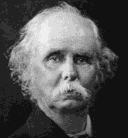Origin of the Idea  <a onClick="window.open('/olcweb/cgi/pluginpop.cgi?it=gif::::/sites/dl/free/0073511455/124310/origins_image.gif','popWin', 'width=70,height=90,resizable,scrollbars');" href="#"><img valign="absmiddle" height="16" width="16" border="0" src="/olcweb/styles/shared/linkicons/image.gif"> (1.0K)</a> <a onClick="window.open('/olcweb/cgi/pluginpop.cgi?it=gif::::/sites/dl/free/0073511455/124310/origins_image.gif','popWin', 'width=70,height=90,resizable,scrollbars');" href="#"><img valign="absmiddle" height="16" width="16" border="0" src="/olcweb/styles/shared/linkicons/image.gif"> (1.0K)</a> | 3.1 Demand and Supply
|  <a onClick="window.open('/olcweb/cgi/pluginpop.cgi?it=gif::::/sites/dl/free/0073511455/124310/origins_image.gif','popWin', 'width=70,height=90,resizable,scrollbars');" href="#"><img valign="absmiddle" height="16" width="16" border="0" src="/olcweb/styles/shared/linkicons/image.gif"> (1.0K)</a> <a onClick="window.open('/olcweb/cgi/pluginpop.cgi?it=gif::::/sites/dl/free/0073511455/124310/origins_image.gif','popWin', 'width=70,height=90,resizable,scrollbars');" href="#"><img valign="absmiddle" height="16" width="16" border="0" src="/olcweb/styles/shared/linkicons/image.gif"> (1.0K)</a> | 3.2 Law of Demand
|
 <a onClick="window.open('/olcweb/cgi/pluginpop.cgi?it=gif::::/sites/dl/free/0073511455/124310/origins_image.gif','popWin', 'width=70,height=90,resizable,scrollbars');" href="#"><img valign="absmiddle" height="16" width="16" border="0" src="/olcweb/styles/shared/linkicons/image.gif"> (1.0K)</a> <a onClick="window.open('/olcweb/cgi/pluginpop.cgi?it=gif::::/sites/dl/free/0073511455/124310/origins_image.gif','popWin', 'width=70,height=90,resizable,scrollbars');" href="#"><img valign="absmiddle" height="16" width="16" border="0" src="/olcweb/styles/shared/linkicons/image.gif"> (1.0K)</a> | 3.1 Demand and Supply |
Alfred Marshall's best-known contribution to economics is the familiar model of supply and demand, sometimes referred to as the "Marshallian Cross." The demand and supply model represents a synthesis of the work that many earlier economists had done. Classical economists, such as Adam Smith and David Ricardo, articulated many of the concepts related to supply. A later group of economists, the Marginalists, developed and articulated fundamental principles of demand. Marshall was the first to combine them formally and truly unleash their analytical power.
Alfred Marshall (1824-1924) was born in Clapham, England, the son of a cashier of the Bank of England. Despite his father's wishes that he study for the ministry at Oxford, Marshall attended Cambridge University, where he studied mathematics, physics and economics. In 1877 he married one of his students, Mary Paley. They collaborated on his first book, The Economics of Industry, published in 1879.
The leading economist of his time, Marshall belonged to what economists refer to as the Neoclassical school of economic thought. Much of what appears in your textbook comes from |  <a onClick="window.open('/olcweb/cgi/pluginpop.cgi?it=jpg::::/sites/dl/free/0073511455/124320/origin03_1.jpg','popWin', 'width=178,height=208,resizable,scrollbars');" href="#"><img valign="absmiddle" height="16" width="16" border="0" src="/olcweb/styles/shared/linkicons/image.gif"> (20.0K)</a> <a onClick="window.open('/olcweb/cgi/pluginpop.cgi?it=jpg::::/sites/dl/free/0073511455/124320/origin03_1.jpg','popWin', 'width=178,height=208,resizable,scrollbars');" href="#"><img valign="absmiddle" height="16" width="16" border="0" src="/olcweb/styles/shared/linkicons/image.gif"> (20.0K)</a> | |
Neoclassical economics, and Marshall's contributions have stood the test of time. Although Marshall used mathematics extensively in his economic models, he emphasized that the math was merely a shorthand language, and not the foundation for economic inquiry and analysis. Marshall established his own set of rules for the use of mathematics in economic theorizing:
|
"(1) Use mathematics as a shorthand language, rather than as an engine of inquiry. (2) Keep to them till you have done. (3) Translate into English. (4) Then illustrate by examples that are important in real life.(5) Burn the mathematics.(6) If you can't succeed in (4), burn (3). This last I [Marshall] did often."(1)
- Jeremy Bentham, An Introduction to the Principles
of Morals and Legislation, (New York: Hafner, 1948), p. 1. [Originally
published in 1780].
Photograph courtesy of: Used from the website of Thoemmes Press.
 <a onClick="window.open('/olcweb/cgi/pluginpop.cgi?it=gif::::/sites/dl/free/0073511455/124310/origins_image.gif','popWin', 'width=70,height=90,resizable,scrollbars');" href="#"><img valign="absmiddle" height="16" width="16" border="0" src="/olcweb/styles/shared/linkicons/image.gif"> (1.0K)</a> <a onClick="window.open('/olcweb/cgi/pluginpop.cgi?it=gif::::/sites/dl/free/0073511455/124310/origins_image.gif','popWin', 'width=70,height=90,resizable,scrollbars');" href="#"><img valign="absmiddle" height="16" width="16" border="0" src="/olcweb/styles/shared/linkicons/image.gif"> (1.0K)</a> | 3.2 Law of Demand |
Besides creating the now familiar diagram of supply and demand, Alfred Marshall articulated the law of demand, and justified the law of demand with the concept of diminishing marginal utility and development of the income and substitution effects. As for the law of demand, Marshall stated: "There is then one general law of demand: The greater the amount to be sold, the smaller must be the price at which it is offered in order that it may find purchasers; or, in other words, the amount demanded increases with a fall in price, and diminishes with a rise in price."(1)
Theoretical justifications for the law of demand include diminishing marginal utility, and the income and substitution effects. The notion of diminishing marginal utility was not a creation of Marshall's, but Marshall applied it to his law of demand. "The larger the amount of a thing that a person has the less, other things equal (i.e., the purchasing power of money and the amount of money at his command being equal), will be the price which he will pay for a little more of it: or in other words his marginal demand price for it diminishes."(2)
Alfred Marshall (1842-1924) was born in Clapham, England, the son of a cashier of the Bank of England. Despite his father's wishes that he study for the ministry at Oxford, Marshall attended Cambridge University, where he studied mathematics, physics and economics. In 1877 he married one of his students, Mary Paley. They collaborated on his first book, The Economics of Industry, published in 1879.(3)
The leading economist of his time, Marshall belonged to what economists refer to as the Neoclassical school of economic thought. Much of what appears in your textbook comes from Neoclassical economics, and Marshall's contributions have stood the test of time. Although Marshall used mathematics extensively in his economic models, he emphasized that the math was merely a shorthand language, and not the foundation for economic inquiry and analysis. Marshall established his own set of rules for the use of mathematics in economic theorizing:
"(1) Use mathematics as a shorthand language, rather than as an engine of inquiry. (2) Keep to them till you have done. (3) Translate into English. (4) Then illustrate by examples that are important in real life. (5) Burn the mathematics. (6) If you can't succeed in (4), burn (3). This last I [Marshall] did often."(4)
- Alfred Marshall, Principles of Economics, 8th edition (London: Macmillan, 1920), 99 [originally published in 1890.
- Ibid. 95.
- William Breit and Roger Ransom, The Academic Scribblers, (New York: Holt, Rinehart and Winston, Inc., 1971), 21.
- Alfred Marshall, Memorials of Alfred Marshall, ed. A.C. Pigou (London: Macmillan, 1925), 427.
|

